
We had amazing experiences welcoming multilingual visitors in our 1st Grade classes over the last few weeks! The students were able to hear and say the sounds and words of a new language, as well as learn a little about other places and cultures around the world, thanks to these gracious members of our PS 58 community. What a delight it is for students and families to share and celebrate their native language and culture with others. Thank you to our visitors for volunteering their time to offer a taste of their background with us!

 Noah’s mom Jiye shared the Korean language and culture with class 1-233. She showed us how boys and girls would traditionally bow, and how they might dress. She read us a very fun book about kids going on an adventure and hearing a new language along the way, and she sang “Twinkle, Twinkle Little Star” for us in her language, with hand gestures that are different from the ones many Americans use. Finally, she shared the Korean alphabet with us, and she gave each of us a card with our name written in Korean — they looked very different!
Noah’s mom Jiye shared the Korean language and culture with class 1-233. She showed us how boys and girls would traditionally bow, and how they might dress. She read us a very fun book about kids going on an adventure and hearing a new language along the way, and she sang “Twinkle, Twinkle Little Star” for us in her language, with hand gestures that are different from the ones many Americans use. Finally, she shared the Korean alphabet with us, and she gave each of us a card with our name written in Korean — they looked very different!
 1-231 was lucky enough to have their own teacher, Ms. Aleksandra, share her Russian language and culture. She showed us some examples of Russian nesting dolls and a doll dressed in fancy traditional clothing. We discussed the many time zones across Russia and around the world. She sang “If You’re Happy and You Know It …” for us in Russian, and it was so fun to play along while hearing the sounds of the language through song! Finally we observed the letters of the Russian alphabet, and we compared their shapes and sounds to the letters of the English alphabet we use. And Ms. Aleksandra wrote everyone’s name using Russian letters — wow, many of them looked very different!
1-231 was lucky enough to have their own teacher, Ms. Aleksandra, share her Russian language and culture. She showed us some examples of Russian nesting dolls and a doll dressed in fancy traditional clothing. We discussed the many time zones across Russia and around the world. She sang “If You’re Happy and You Know It …” for us in Russian, and it was so fun to play along while hearing the sounds of the language through song! Finally we observed the letters of the Russian alphabet, and we compared their shapes and sounds to the letters of the English alphabet we use. And Ms. Aleksandra wrote everyone’s name using Russian letters — wow, many of them looked very different!
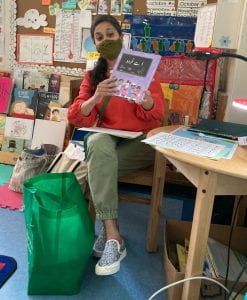 Finley’s mom Seher came to visit 1-215, Ms. Valerie’s class. She told us that she was born in the United States, but that her parents come from Pakistan, and they speak to her in Urdu. We spent a lot of time exploring the Urdu alphabet, which we noticed is written from right to left, instead of from left to right, as we see in English and French … and the letters are completely different! We learned some of the names and sounds of the letters, and we even tried writing some of them in our notebooks — what an experience! Also, Seher showed us some beautiful embroidery from Pakistan, and we got to watch a fun video with the numbers in Urdu. Finally, we were amazed to learn that the English word “pajamas” comes from the word for “pants” in Urdu!
Finley’s mom Seher came to visit 1-215, Ms. Valerie’s class. She told us that she was born in the United States, but that her parents come from Pakistan, and they speak to her in Urdu. We spent a lot of time exploring the Urdu alphabet, which we noticed is written from right to left, instead of from left to right, as we see in English and French … and the letters are completely different! We learned some of the names and sounds of the letters, and we even tried writing some of them in our notebooks — what an experience! Also, Seher showed us some beautiful embroidery from Pakistan, and we got to watch a fun video with the numbers in Urdu. Finally, we were amazed to learn that the English word “pajamas” comes from the word for “pants” in Urdu!

Ms. DiMassa’s class got a visit from Lily’s mom Flavia, who is a language teacher herself, and thus a pro at this! She shared with us her native language, Portuguese, and a bit about the culture of Brazil, where she comes from. She showed us the flag and told us about Carnaval, a big celebration that happens every year in Rio de Janeiro. We danced along to one of Lily’s favorite samba songs, and we heard that Lily will be doing a soccer camp in Brazil this summer, like so many kids do in the country! We got a taste of a delicious sweet treat, brigadeiro, and we listened to the classic story of Little Red Hiding Hood in Portugese … it was fun to notice the Portugese word “lobo” for wolf is similar to the word “loup” in French and almost identical to “lobo” in Spanish!
 Seiji’s mom Yuko shared the Japanese language and culture with class 1-207. She told us how she came to the United States as an adult and how it was challenging to speak a new language in a new country … We especially loved her story about ordering a sandwich in English for one of the first times, and what strategies she used to get her message across! What a great illustration of the courage of multilingual people for these young kids. Then, Yuko showed us the different writing systems used in Japanese. We got to learn how to write a few words we already know in English — like sushi and ninja — but this time, in Japanese, from Yuko and Seiji! Finally, we were touched that Yuko had made beautiful origami animals for all of us to choose from and take home. Arigato Yuko! ありがとうございました
Seiji’s mom Yuko shared the Japanese language and culture with class 1-207. She told us how she came to the United States as an adult and how it was challenging to speak a new language in a new country … We especially loved her story about ordering a sandwich in English for one of the first times, and what strategies she used to get her message across! What a great illustration of the courage of multilingual people for these young kids. Then, Yuko showed us the different writing systems used in Japanese. We got to learn how to write a few words we already know in English — like sushi and ninja — but this time, in Japanese, from Yuko and Seiji! Finally, we were touched that Yuko had made beautiful origami animals for all of us to choose from and take home. Arigato Yuko! ありがとうございました
 Amaris’s mom Melissa came to visit class 1-213, Ms. Lewis’s class. She, along with Amaris and Raphaelle, who both speak Mandarin at home, shared a bit of the language with us. Melissa told us that she was born in Singapore, a city of many immigrants who speak many languages, like New York City. Her grandparents and great-grandparents immigrated from China to Singapore, so she is a third-generation Singaporean of Chinese heritage. She learned to speak Mandarin with her mother, which she said is similar to the way some of the students learned to speak French with their family members at home even though they were born in the United States. Melissa showed us that Mandarin is a pictorial language; we saw how the simplified character for “hand” looks a bit like a hand, and how the characters for “mouth” and “mountain” also bear a resemblance to those things! At the end of the visit we all said thank you to Melissa, Amaris and Raphaelle … Xièxiè! 谢谢
Amaris’s mom Melissa came to visit class 1-213, Ms. Lewis’s class. She, along with Amaris and Raphaelle, who both speak Mandarin at home, shared a bit of the language with us. Melissa told us that she was born in Singapore, a city of many immigrants who speak many languages, like New York City. Her grandparents and great-grandparents immigrated from China to Singapore, so she is a third-generation Singaporean of Chinese heritage. She learned to speak Mandarin with her mother, which she said is similar to the way some of the students learned to speak French with their family members at home even though they were born in the United States. Melissa showed us that Mandarin is a pictorial language; we saw how the simplified character for “hand” looks a bit like a hand, and how the characters for “mouth” and “mountain” also bear a resemblance to those things! At the end of the visit we all said thank you to Melissa, Amaris and Raphaelle … Xièxiè! 谢谢
Wow! Do you know someone who comes from another country, or speaks another language? Maybe you can take some time to get to know a bit about their language and culture; it’s a great way to connect with someone and learn more about your world.
 I can’t believe that summer is almost here! I’m so glad we got to have Language Workshop together this year. Over the break, here are some things you can do to continue to explore languages and cultures:
I can’t believe that summer is almost here! I’m so glad we got to have Language Workshop together this year. Over the break, here are some things you can do to continue to explore languages and cultures:


 Noah’s mom Jiye shared the Korean language and culture with class 1-233. She showed us how boys and girls would traditionally bow, and how they might dress. She read us a
Noah’s mom Jiye shared the Korean language and culture with class 1-233. She showed us how boys and girls would traditionally bow, and how they might dress. She read us a  1-231 was lucky enough to have their own teacher, Ms. Aleksandra, share her Russian language and culture. She showed us some examples of Russian nesting dolls and a doll dressed in fancy traditional clothing. We discussed the many time zones across Russia and around the world. She sang “If You’re Happy and You Know It …” for us in Russian, and it was so fun to play along while hearing the sounds of the language through song! Finally we observed the letters of the Russian alphabet, and we compared their shapes and sounds to the letters of the English alphabet we use. And Ms. Aleksandra wrote everyone’s name using Russian letters — wow, many of them looked very different!
1-231 was lucky enough to have their own teacher, Ms. Aleksandra, share her Russian language and culture. She showed us some examples of Russian nesting dolls and a doll dressed in fancy traditional clothing. We discussed the many time zones across Russia and around the world. She sang “If You’re Happy and You Know It …” for us in Russian, and it was so fun to play along while hearing the sounds of the language through song! Finally we observed the letters of the Russian alphabet, and we compared their shapes and sounds to the letters of the English alphabet we use. And Ms. Aleksandra wrote everyone’s name using Russian letters — wow, many of them looked very different! Finley’s mom Seher came to visit 1-215, Ms. Valerie’s class. She told us that she was born in the United States, but that her parents come from Pakistan, and they speak to her in Urdu. We spent a lot of time exploring the Urdu alphabet, which we noticed is written from right to left, instead of from left to right, as we see in English and French … and the letters are completely different! We learned some of the names and sounds of the letters, and we even tried writing some of them in our notebooks — what an experience! Also, Seher showed us some beautiful embroidery from Pakistan, and we got to watch a
Finley’s mom Seher came to visit 1-215, Ms. Valerie’s class. She told us that she was born in the United States, but that her parents come from Pakistan, and they speak to her in Urdu. We spent a lot of time exploring the Urdu alphabet, which we noticed is written from right to left, instead of from left to right, as we see in English and French … and the letters are completely different! We learned some of the names and sounds of the letters, and we even tried writing some of them in our notebooks — what an experience! Also, Seher showed us some beautiful embroidery from Pakistan, and we got to watch a 
 Seiji’s mom Yuko shared the Japanese language and culture with class 1-207. She told us how she came to the United States as an adult and how it was challenging to speak a new language in a new country … We especially loved her story about ordering a sandwich in English for one of the first times, and what strategies she used to get her message across! What a great illustration of the courage of multilingual people for these young kids. Then, Yuko showed us the different writing systems used in Japanese. We got to learn how to write a few words we already know in English — like sushi and ninja — but this time, in Japanese, from Yuko and Seiji! Finally, we were touched that Yuko had made beautiful origami animals for all of us to choose from and take home. Arigato Yuko!
Seiji’s mom Yuko shared the Japanese language and culture with class 1-207. She told us how she came to the United States as an adult and how it was challenging to speak a new language in a new country … We especially loved her story about ordering a sandwich in English for one of the first times, and what strategies she used to get her message across! What a great illustration of the courage of multilingual people for these young kids. Then, Yuko showed us the different writing systems used in Japanese. We got to learn how to write a few words we already know in English — like sushi and ninja — but this time, in Japanese, from Yuko and Seiji! Finally, we were touched that Yuko had made beautiful origami animals for all of us to choose from and take home. Arigato Yuko!  Amaris’s mom Melissa came to visit class 1-213, Ms. Lewis’s class. She, along with Amaris and Raphaelle, who both speak Mandarin at home, shared a bit of the language with us. Melissa told us that she was born in Singapore, a city of many immigrants who speak many languages, like New York City. Her grandparents and great-grandparents immigrated from China to Singapore, so she is a third-generation Singaporean of Chinese heritage. She learned to speak Mandarin with her mother, which she said is similar to the way some of the students learned to speak French with their family members at home even though they were born in the United States. Melissa showed us that Mandarin is a pictorial language; we saw how the simplified character for “hand” looks a bit like a hand, and how the characters for “mouth” and “mountain” also bear a resemblance to those things! At the end of the visit we all said thank you to Melissa, Amaris and Raphaelle …
Amaris’s mom Melissa came to visit class 1-213, Ms. Lewis’s class. She, along with Amaris and Raphaelle, who both speak Mandarin at home, shared a bit of the language with us. Melissa told us that she was born in Singapore, a city of many immigrants who speak many languages, like New York City. Her grandparents and great-grandparents immigrated from China to Singapore, so she is a third-generation Singaporean of Chinese heritage. She learned to speak Mandarin with her mother, which she said is similar to the way some of the students learned to speak French with their family members at home even though they were born in the United States. Melissa showed us that Mandarin is a pictorial language; we saw how the simplified character for “hand” looks a bit like a hand, and how the characters for “mouth” and “mountain” also bear a resemblance to those things! At the end of the visit we all said thank you to Melissa, Amaris and Raphaelle … 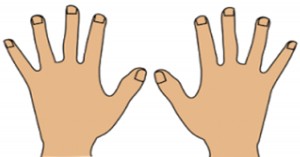 1st grade & 2nd grade DLP students have continued exploring the Spanish language together. After studying the numbers from 1-10, we learned this fun song to help us review those words … do you remember what we are counting in the song?
1st grade & 2nd grade DLP students have continued exploring the Spanish language together. After studying the numbers from 1-10, we learned this fun song to help us review those words … do you remember what we are counting in the song?
 If you’d like to practice more at home, you can use these Quizlet sets to review some of the words and phrases we’ve been using in Spanish:
If you’d like to practice more at home, you can use these Quizlet sets to review some of the words and phrases we’ve been using in Spanish: Diez deditos
Diez deditos

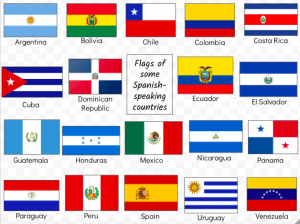 Both 1st grade and 2nd Grade DLP students are now spending a few weeks exploring some of the Spanish language together. Many students know a few words in this language, and a few Spanish-fluent children now have the chance to share their language with their classmates. It’s a great opportunity for all of these classes to discover a different language together, perhaps finding new nuances, comparing it to the French and English languages, and maybe having the experience for the first time of learning new words in an unfamiliar language, for students who have been raised bilingually at home.
Both 1st grade and 2nd Grade DLP students are now spending a few weeks exploring some of the Spanish language together. Many students know a few words in this language, and a few Spanish-fluent children now have the chance to share their language with their classmates. It’s a great opportunity for all of these classes to discover a different language together, perhaps finding new nuances, comparing it to the French and English languages, and maybe having the experience for the first time of learning new words in an unfamiliar language, for students who have been raised bilingually at home.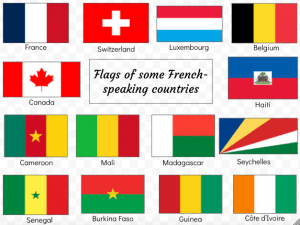

 Right now, all the way across the globe, the
Right now, all the way across the globe, the  You will also likely hear
You will also likely hear  You might also see the
You might also see the  In Language Workshop, we sometimes take time to explore other languages and cultures of our diverse community, so this week, students in all Kindergarten and 1st Grade classes have been discussing the Lunar New Year, a special holiday coming up in early February that is celebrated by many people around the world.
In Language Workshop, we sometimes take time to explore other languages and cultures of our diverse community, so this week, students in all Kindergarten and 1st Grade classes have been discussing the Lunar New Year, a special holiday coming up in early February that is celebrated by many people around the world.
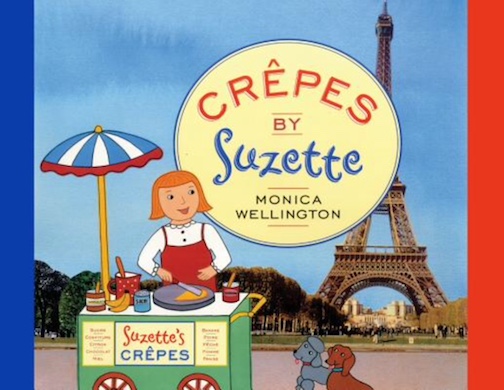 This week, to celebrate
This week, to celebrate 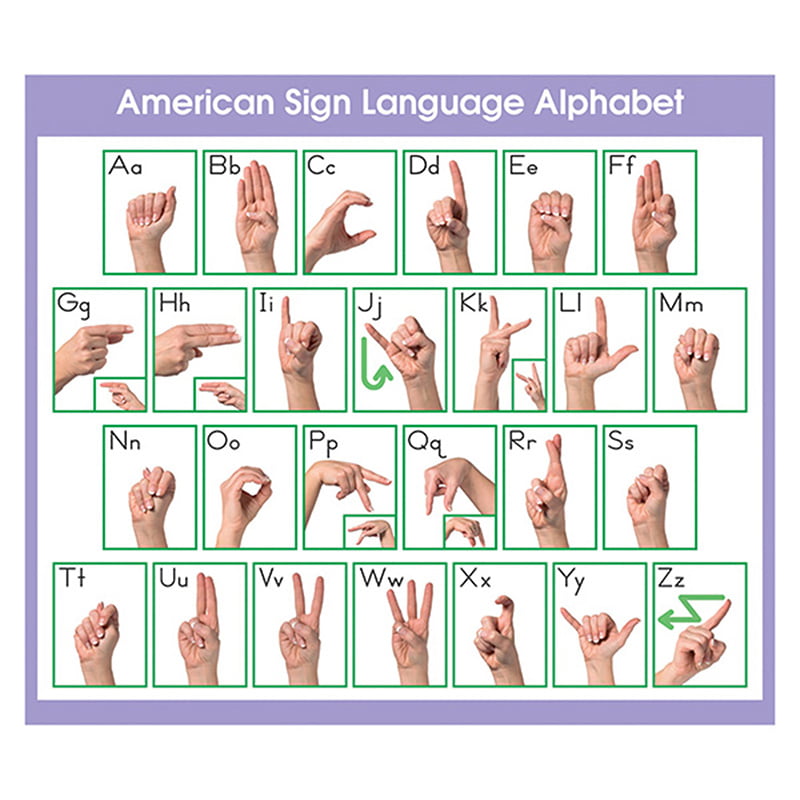 The students in the 1st Grade DLP classes recently had an introductory exploration of American Sign Language. We discussed who uses ASL, how it’s different from other languages, and how learning specific signs is different from using certain gestures in everyday conversation. In particular, we practiced the signs of the ASL alphabet, and we tried fingerspelling our names and the names of some of our classmates.
The students in the 1st Grade DLP classes recently had an introductory exploration of American Sign Language. We discussed who uses ASL, how it’s different from other languages, and how learning specific signs is different from using certain gestures in everyday conversation. In particular, we practiced the signs of the ASL alphabet, and we tried fingerspelling our names and the names of some of our classmates.